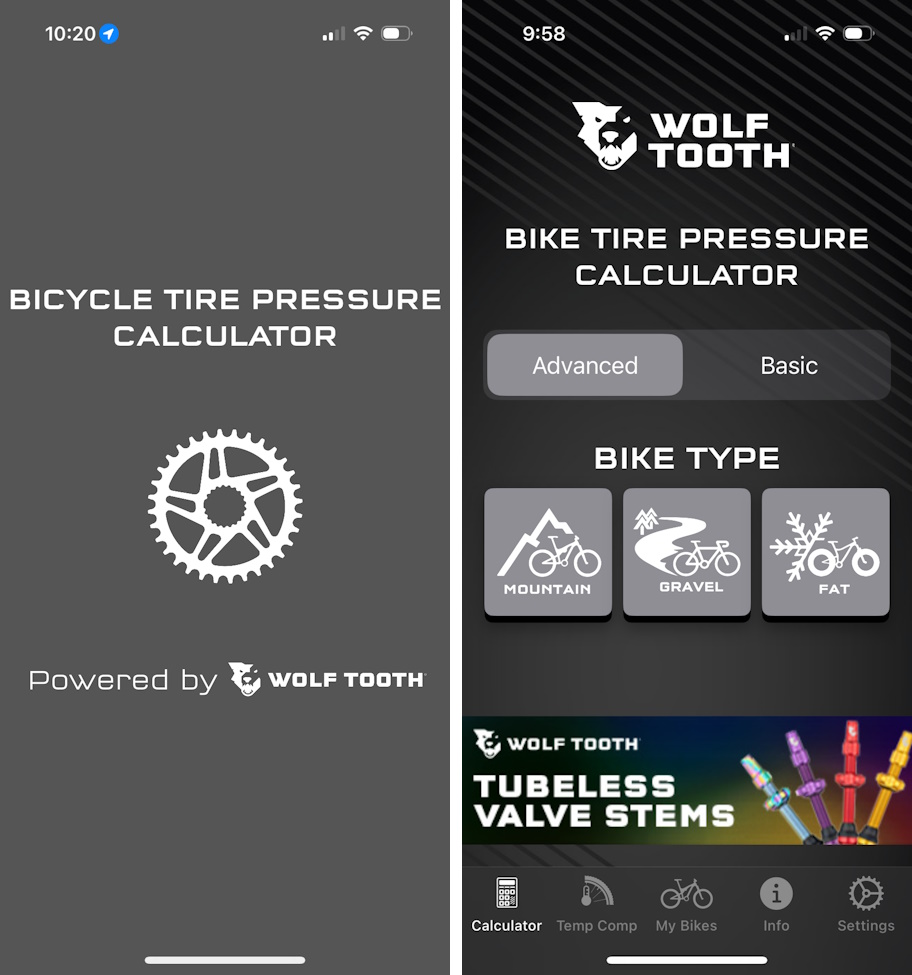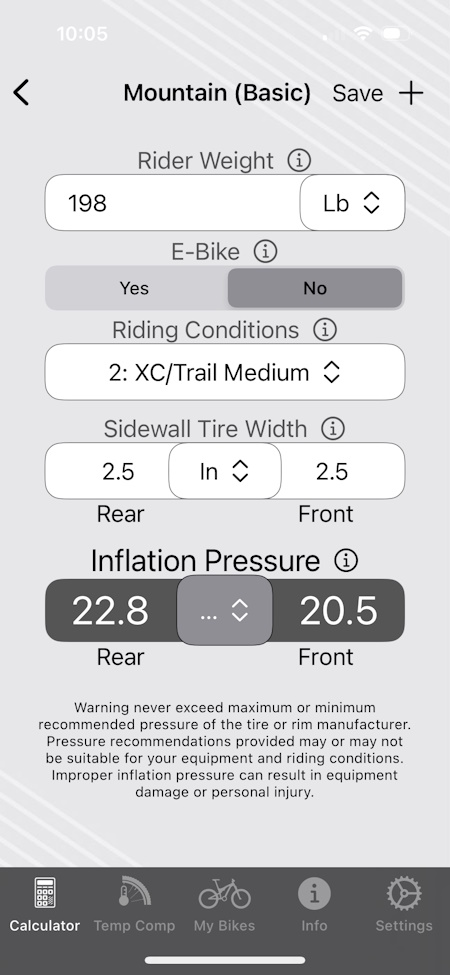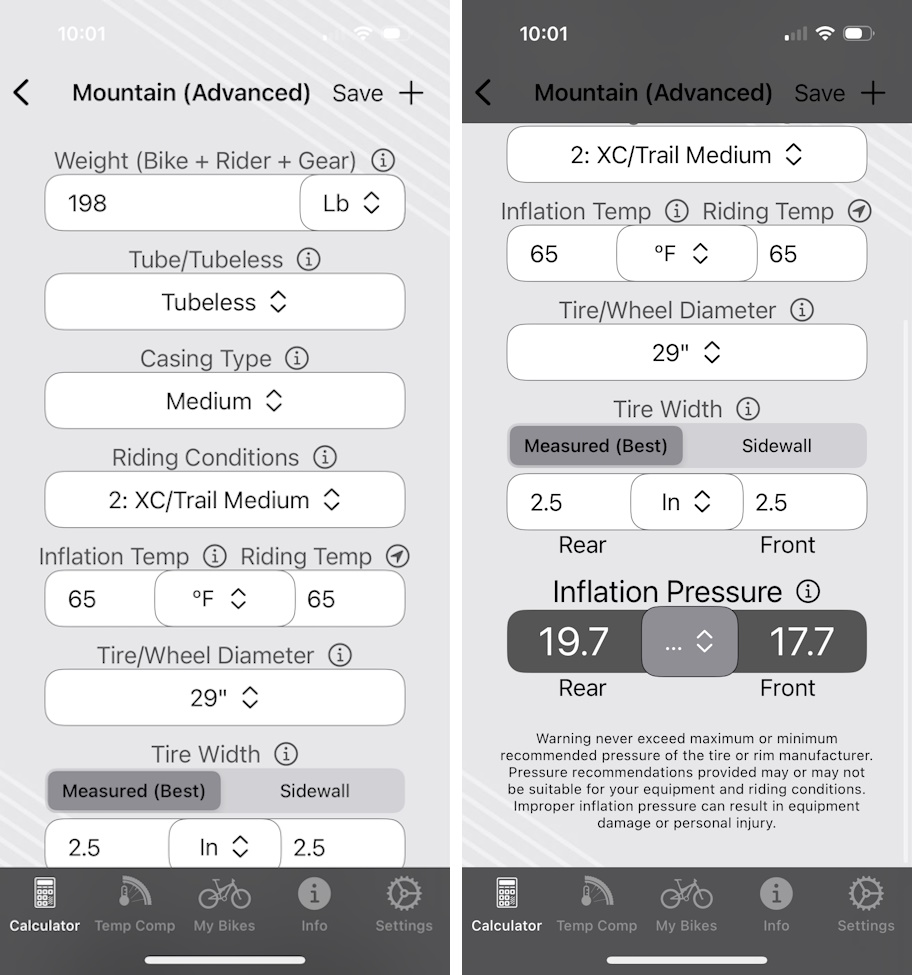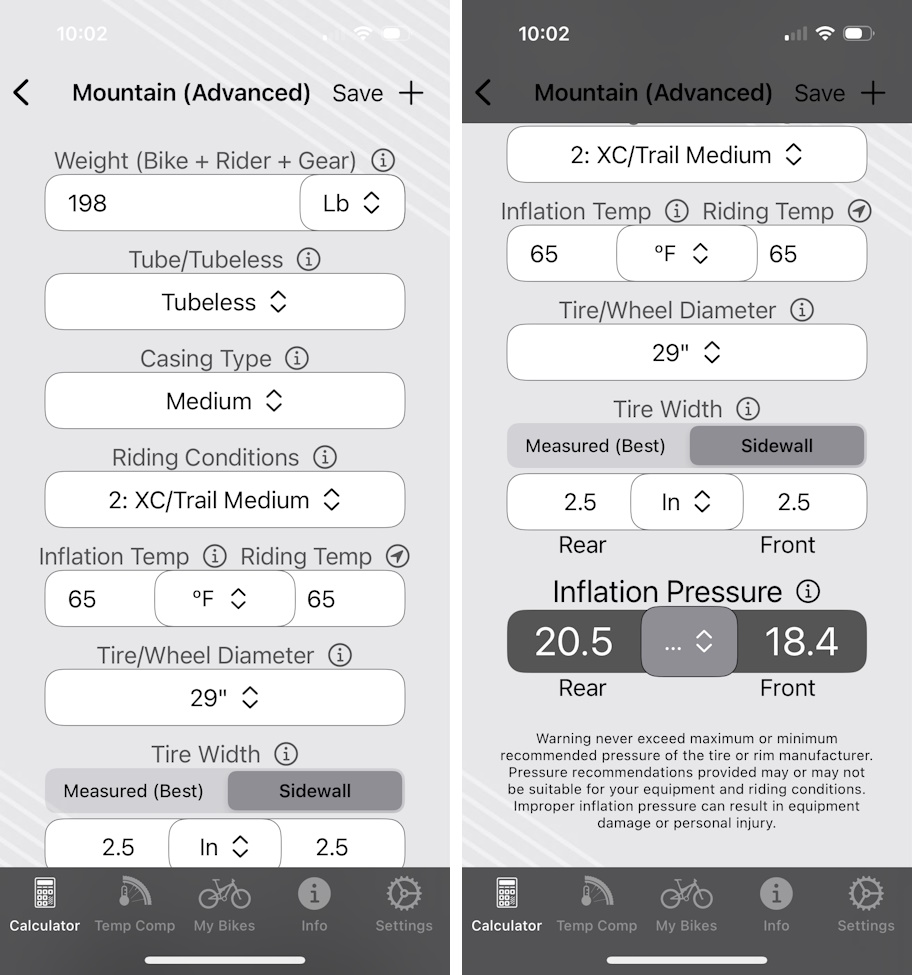
Use the Wolf Tooth Tire Pressure App as a Guide
The Bike Tire Pressure Calculator app powered by Wolf Tooth allows you to find your ideal tire pressure based on terrain and riding conditions for the route ahead. Share details for wheel size, tire width, rider weight, riding temperature, and more to receive a specific recommendation for tire inflation pressure for gravel, mountain, and fat bikes.

The Bike Tire Pressure Calculator has two modes for finding perfect tire pressure. The Basic mode accounts for abbreviated factors to quickly determine the best tire pressure.

In contrast, the Advanced mode considers several factors to identify the ideal tire pressure for the ride ahead.
Tire pressure is one of the least appreciated aspects of bicycle performance. When discussing performance, it is essential to remember that it does not just mean going faster. The performance also means riding more confidently and having more fun on your bike. Every rider, from novice to professional, will benefit from having the correct tire pressure for riding conditions.

The Wolf Tooth philosophy is based on the idea that lower pressures are better for performance. The Bike Tire Pressure Calculator is built around this point of view. Perhaps a better way to state it is “the lowest possible pressure consistent with terrain, riding style, and equipment is better.” It’s certainly possible to go too low; the difference between “just right” and “too low” can be small. The Bike Tire Pressure Calculator app powered by Wolf Tooth will find the ideal tire pressure at the intersection of fast, comfortable, and confident.
- Improved traction and control. This is the big one—by reducing pressure, more of the tire is in contact with the ground, and the tire is more compliant. These factors make your bike more fun to ride, add to your confidence, and, if you are racing, can make you faster. The tire can deflect and conform instead of bouncing off every rock and root. Cornering speeds and confidence will increase.
- Improved comfort. Tires work as a form of micro-suspension, and lower pressure helps this. While it’s critically crucial on bikes without suspension, you will notice it on a full-suspension mountain bike as reduced trail buzz from small rocks, roots, etc., and an overall calmer feeling to the ride.
- Lower rolling resistance on rough or soft surfaces. Yes, lower pressure can reduce rolling resistance, as counterintuitive as it sounds. As the tire becomes more compliant, it can more efficiently absorb minor impacts instead of transferring them into the bike/ride as vertical motion, saving energy. On softer surfaces, the tire will float on top of the surface instead of digging in. This is especially apparent on something like sand, snow, or deep gravel, but it’s a factor anytime the trail surface is not firm.
Using the Wolf Tooth tire pressure app as a guide, you can quickly get pressure recommendations in the ideal range for your weight, tire size/type, and riding conditions. Then, through experimentation, you can decide what works best for you on any ride.
Thoughts => The app did well estimating the pressure of the Delium 29×2.5 tires I used on my x-country Ibis Exie bike. It recommended 19.7 front/17.7 rear, and for my personal feelings, I liked 19 front/low 18 rear. I have gone to low 17s, but they felt too squishy, while 20s were suitable for fire roads but didn’t provide as much traction on my local loose, gravelly trails. The Wolf Tooth Bike Tire Pressure Calculator app is a valuable tool and does an accurate job of providing a zone of pressure that can be used for biking. Still, as always, experimentation is needed to fine-tune personal and terrain usage.





{ 0 comments… add one now }